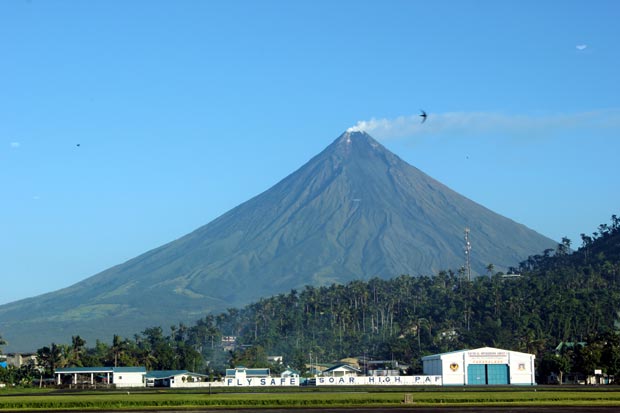
Mayon Volcano. INQUIRER.net FILE PHOTO/NOY MORCOSO
MANILA, Philippines — Heavy rain due to Tropical Storm Ambo may cause lahar and sediment-laden streamflow along rivers that run down the slopes of Mayon Volcano in Albay, the Philippine Institute of Volcanology and Seismology (Phivolcs) warned Wednesday.
State volcanologists said in an advisory that Ambo’s downpour may generate post-eruption lahars on major channels draining the edifice of the volcano “by incorporating loose material from thick pyroclastic density current (PDC) deposits and remnant ashfall.” This, it added, endangers communities near Mayon Volcano.
Known as the Philippines’ most active volcano, Mayon’s last eruption was in January to March 2018.
According to Phivolcs, the bulk of erodible PDC deposits occupy the watershed areas of the Miisi, Mabinit, Buyuan, and Basud channels.
“In addition, older and erodible eruption deposits occupy the watershed areas on the eastern and western slopes of the edifice and can be remobilized as non-eruption lahars by the erosion of banks and channel beds,” Phivolcs said.
“Mayon lahars can threaten communities along the middle and lower slopes and downstream of these channels with inundation, burial, and wash away,” the agency added.
Specifically, Phivolcs said channels in danger of potential lahar are the Miisi, Binaan, Anoling, Quirangay, Maninila, Masarawag, Muladbucad, Nasisi, Mabinit, Matan-ag, and Basud channels.
“Communities and local government units beside these drainages are advised to be additionally vigilant and to move residents to high ground should heavy rains occur,” Phivolcs said.
Ambo is expected to bring moderate to heavy rains over Albay on Thursday, according to a weather bulletin issued by the Philippine Atmospheric, Geophysical, and Astronomical Services Administration (Pagasa).
Ambo is also expected to intensify into a typhoon by Friday, the state weather bureau said.